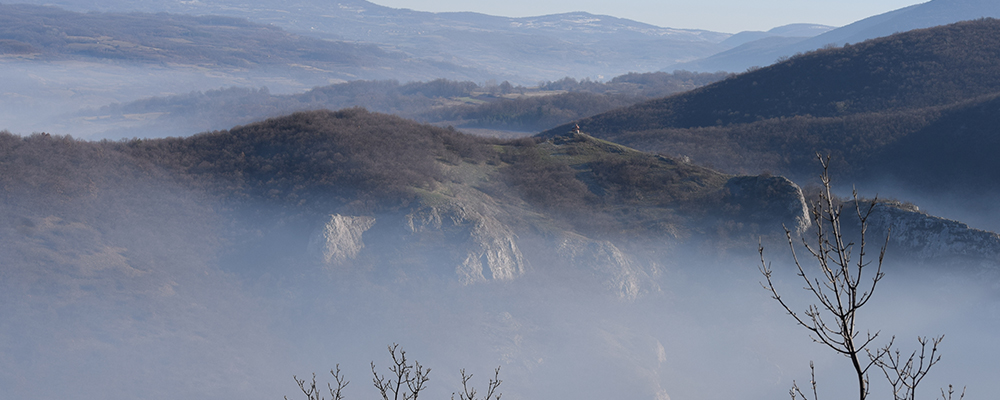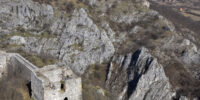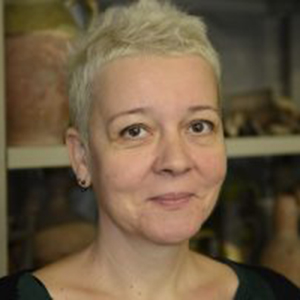
SPECIAL TOPICS
BIOARCHAEOLOGY
Bioarchaeology includes a set of archaeological disciplines, such as biophysical anthropology, archaeozoology, and archaeobotany, which involve the study of biological remains from archaeological sites. The aim of bioarchaeology, with its specific methods and comparative materials, is to contribute to the archaeological interpretation and reconstruction of life in the past, whether studying individual archaeological sites or entire regions.
Biophysical anthropology
Biophysical anthropology is a scientific discipline that studies human skeletal remains from archaeological sites. Human skeletal remains contain a wealth of information about ancient populations, especially when data from written sources or archaeological materials is insufficient. Through anthropological analysis of human skeletal remains, we learn a lot about the life conditions and health of ancient populations, allowing us to reconstruct life as it was in the past. The main tasks of the discipline are to determine the individual age and sex of the skeleton and to reconstruct the demographic profile of one specific population, and through further dental and palaeopathological analysis and the examination of entheses, we can obtain information about health status, diet, physical activities, human mobility, etc. Palaeodemographic analysis enables us to create age profiles, sex distributions, and mortality rates in specific age categories based on data about age and sex at the time of death for each examined skeleton. Additionally, we can provide the answer to the question of whether biological populations at a specific necropolis were buried or not.
List of archaeological sites:
Banjska Monastery
Begov Most – Staničenje
Belgrade (Singidunum, Tadeuša Košćuška, Belgrade Fortress)
Borsko jezero
Bubanj
Caričin Grad (Iustiniana Prima)
Davidovac
Gamzigrad (Felix Romuliana)
Hajdučka česma – Brestovačka banja
Jagodin Mala (Naissus)
Kriveljski kamen – Bunar
Mala Kopašnica
Manasija Monastery
Mokranjske stene
Novi Pazar (Dublje iznad kuće, Porta Petrove crkve)
Ravna (Timacum Minus)
Smederevo Fortress
Sremska Mitrovica (Sirmium)
Studenica Monastery
.
Archaeozoology
Archaeozoology (zooarchaeology) is an archaeological discipline that studies animal remains from archaeological sites. Through various study methods, archaeozoological research contributes answers to important questions related to the interaction between humans and animals in the past; such as domestication and breeding of animals, hunting strategy, food preparation, and depositing remains, as well as the social/ritual role of animals. Archaeozoology is characterised by an interdisciplinary approach. Apart from archaeological experience, the analysis of animal remains requires knowledge of biology, ecology, veterinary medicine, etc. Complex archaeozoological methods include taxonomic identification, identification of skeletal elements, identification of sex and age, and morphometric, taphonomic, and palaeopathological analysis.
Archaeozoological research – list of archaeological sites within the projects of the Institute of Archaeology (alphabetically):
Belgrade Fortress
Caričin Grad
Davidovac – Gradište
Gloždak, Lidl
Pavlovac – Gumnište
Ranutovac
Sirmium
Slatina – Turska česma, Drenovac
Staničenje
Timacum Maius
Viminacium
Archaeobotany
Archaeobotany (palaeoethnobotany) is a scientific discipline that studies plant remains from archaeological sites. Plants have always played a significant role in people’s lives: as an important part of the diet; they were used for the production of everyday utilitarian items, such as clothes and shoes, tools, furniture and houses; they also had a role in various rituals and beliefs. As such, they provide a unique insight into the economic, social and cultural aspects of life in the past.
Plant remains testify to the human influence on the natural environment and vegetation: by clearing forests and creating space for fields or pastures, and through the transfer and spread of plant species outside their native area. In addition, humans actively change the properties of plants through the domestication and management of wild species.
Different types of plant remains can be preserved on archaeological sites, differing in characteristics and size, from extremely small (pollen, phytoliths and starch grains) to large plant remains (seeds, fruits, tubers, wood, etc.). Each type of plant remains has a developed methodology of analysis, which usually involves four steps: taking soil samples, extracting plant remains, and identification and interpretation of the results.









